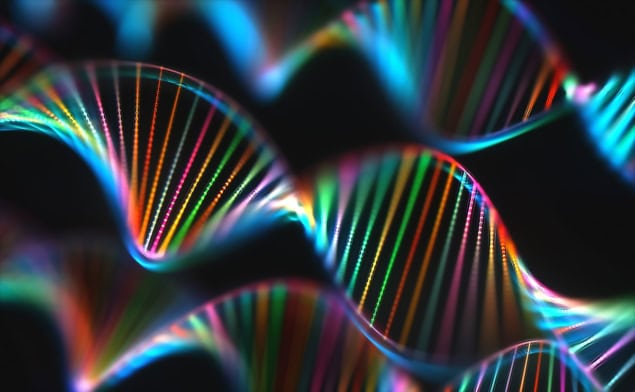A new model shows how programmable DNA strands control interactions between diverse colloidal particles

DNA is a fascinating macromolecule that guides protein production and enables cell replication. It has also found applications in nanoscience and materials design.
Colloidal crystals are ordered structures made from tiny particles suspended in fluid that can bond to other particles and add functionalisation to materials. By controlling colloidal particles, we can build advanced nanomaterials using a bottom-up approach. There are several ways to control colloidal particle design, ranging from experimental conditions such as pH and temperature to external controls like light and magnetic fields.
An exciting approach is to use DNA-mediated processes. DNA binds to colloidal surfaces and regulates how the colloids organize, providing molecular-level control. These connections are reversible and can be broken using standard experimental conditions (e.g., temperature), allowing for dynamic and adaptable systems. One important motivation is their good biocompatibility, which has enabled applications in biomedicine such as drug delivery, biosensing, and immunotherapy.
Programmable Atom Equivalents (PAEs) are large colloidal particles whose surfaces are functionalized with single-stranded DNA, while separate, much smaller DNA-coated linkers, called Electron Equivalents (EEs), roam in solution and mediate bonds between PAEs. In typical PAE-EE systems, the EEs carry multiple identical DNA ends that can all bind the same type of PAE, which limits the complexity of the assemblies and makes it harder to program highly specific connections between different PAE types.
In this study, the researchers investigate how EEs with arbitrary valency, carrying many DNA arms, regulate interactions in a binary mixture of two types of PAEs. Each EE has multiple single-stranded DNA ends of two different types, each complementary to the DNA on one of the PAE species. The team develops a statistical mechanical model to predict how EEs distribute between the PAEs and to calculate the effective interaction, a measure of how strongly the PAEs attract each other, which in turn controls the structures that can form.
Using this model, they inform Monte Carlo simulations to predict system behaviour under different conditions. The model shows quantitative agreement with simulation results and reveals an anomalous dependence of PAE-PAE interactions on EE valency, with interactions converging at high valency. Importantly, the researchers identify an optimal valency that maximizes selectivity between targeted and non-targeted binding pairs. This groundbreaking research provides design principles for programmable self-assembly and offers a framework that can be integrated into DNA nanoscience.
Read the full article
Designed self-assembly of programmable colloidal atom-electron equivalents
Xiuyang Xia et al 2025 Rep. Prog. Phys. 88 078101
Do you want to learn more about this topic?
Assembly of colloidal particles in solution by Kun Zhao and Thomas G Mason (2018)
